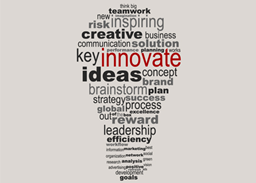
How many organizations have innovation, creativity, or other similar belief in their list of core values? The answer is: most. Yet how many managers really know how to foster innovation on their teams? The answer is: not most.
Many managers talk about innovation, but are quick to dismiss people’s ideas. They shut people down. They respond with “We’ve tried that before.” or “That will never get approved.” or simply “That won’t work.”
Most managers say they will tolerate mistakes, but they don’t. They say it’s okay to take risks, but it really isn’t. Neither do they give employees the time, resources, or funding needed to truly support innovation.
Why is there such a gap between a stated desire to be innovative and an ability to be innovative? Is the gap because being innovative is hard? Or risky? Takes too much time? Is innovation so broad that it isn’t tangible enough to understand? Or maybe most managers, as well as employees, simply don’t know how to be innovative or foster innovation.
The answer to why innovation is so elusive is in part explained by understanding the word innovate. To innovate is to do something in a new way. This implies that “change” is involved and to state the obvious: change is hard. Change requires slowing down and sometimes going backwards. It requires time, attention, and learning. It involves stopping old habits and creating new ones. It involves being uncomfortable and inconvenienced. Perhaps most challenging, change involves experiencing pain before gain. People have to go through the frustration of learning to do something new which is accompanied with feeling incompetent if not inferior until the new competency is developed or the new approach is learned.
Maybe the more accurate core value that organizations should use to move past “innovation” being merely a generic platitude is “get comfortable with being uncomfortable.” But then wouldn’t most people be turned off by that? They would think, “Why should we embrace being uncomfortable? We like being comfortable.” Can you imagine how well a hiring interview would go if the hiring manager said to the applicant “Please join our organization and we’ll teach you how to enjoy being uncomfortable!”
Yet we do need to embrace being uncomfortable. Of course, not all the time, but discomfort is where learning, change, innovation, and growth happens. Being uncomfortable is part of improving ourselves, relationships, products, services, and finances. As the contemporary author and consultant Jamie Notter says, “innovation unlocks new value.”
Fostering innovation has many dimensions, but fundamentally starts with fostering discomfort and in particular, challenging complacency …. aka the status quo.
Listed below is a list of best practices you might refer to or use as a checklist to see how well you currently promote innovation in your circle of influence:
- Get real and be honest about your willingness to take on risks, embrace experimentation, allow mistakes, and change long-held beliefs and behaviors.
- Gain buy-in for innovation by “starting with the why”, giving relevant examples and testimonials, and emphasizing the benefits of innovation.
- Promote a curiosity mindset that constantly asks simple questions like “Why do we do that?”, “What if we did this instead?”, or “How might we ….?”
- Challenge complacency and the status quo. Adopt a continuous improvement mindset that embraces the reality that the world is constantly changing.
- Manifest an open-mindedness to new ideas. Show support for ideas by listening with the intent to understand rather than to judge, control, or dismiss.
- Encourage unstructured sharing of ideas, best-practices, and resources within your team as well as across departments, branches, and divisions.
- Foster external relationships with trusted and competent entities who provide unique outsider perspectives in related as well as unrelated fields.
- Provide opportunities and time for people to work on their ideas and present them to decision makers who have the authority to act on the ideas.
- Celebrate and reward successful innovations as well as recognize innovative ideas, intentions, and effort even if they aren’t pursued or end in failure.
- Make available easy to use tools and methods for ideation, brainstorming, problem mapping, analyzing, prototyping, and problem solving.
- Reward “mastery of a domain” as much as “management of people” to foster the highest levels of expertise possible on which to advance creative new ideas.
- For those truly committed to the highest levels of innovation, provide enabling resources such as innovation experts, innovation training, and innovation funding.
PDF version of this article: https://alpinelink.com/docs/Innovation_Best_Practices.pdf.
